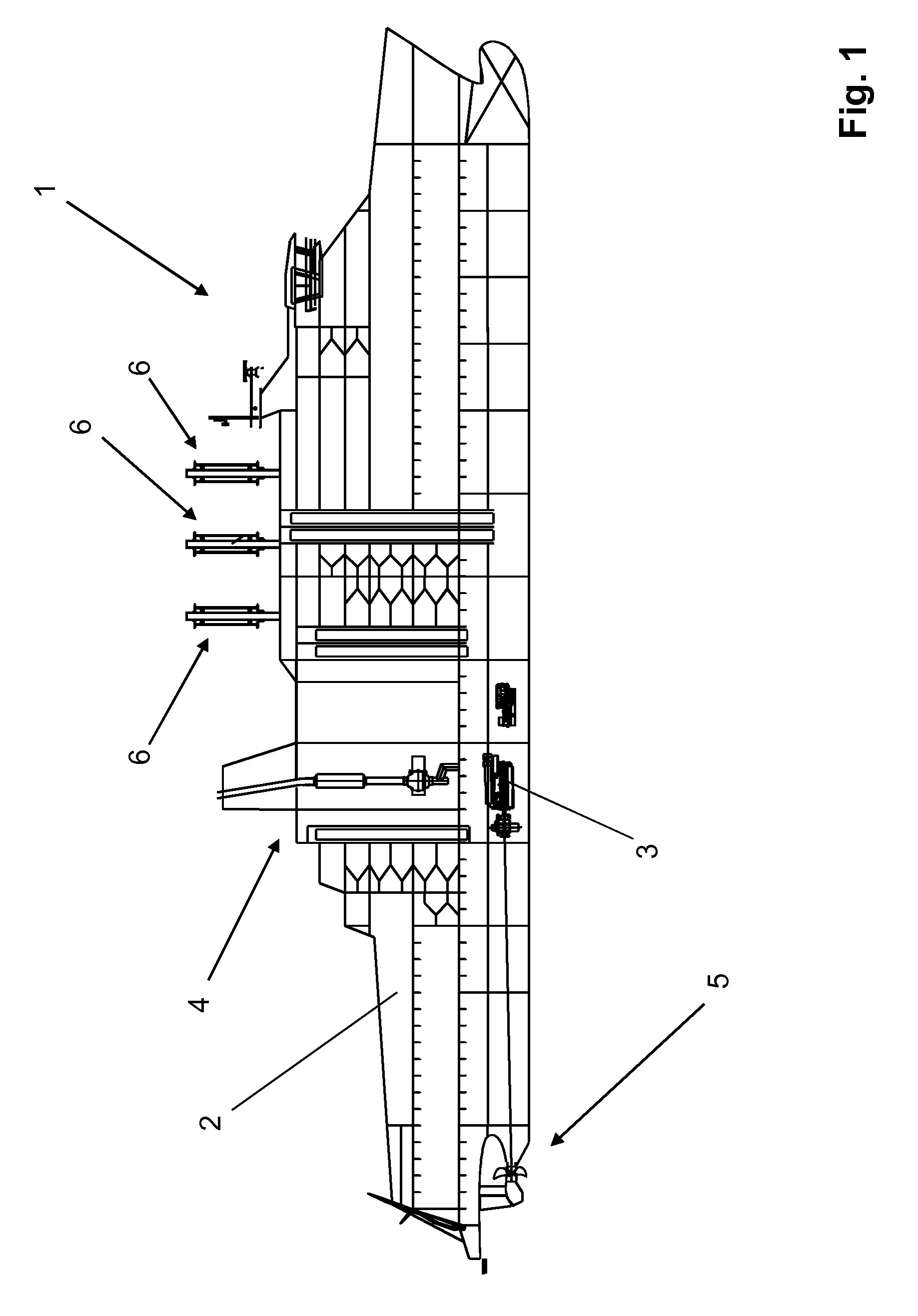Marine vessel
a technology for marine vessels and rotors, applied in the field of marine vessels, can solve the problems of limited use of conventional flettner rotors, no benefit of head and tail wind from flettner rotors, and no benefit in port, so as to achieve a larger cross-area of wind turbine configuration and higher output
- Summary
- Abstract
- Description
- Claims
- Application Information
AI Technical Summary
Benefits of technology
Problems solved by technology
Method used
Image
Examples
first embodiment
[0030]FIG. 2 illustrates the present invention in a first mode of deployment. The vertically arranged cylinder is indicated by reference sign 6 and the first vertical axis by reference sign 7. The vertically arranged cylinder 6 comprises a cylindrical shell 61 with three sections, a first section 62, a second section 63 and a third section 64. Each section forms a part, more specifically a curved portion, including two opposite ends, of the cylindrical shell 61. Further, each section is provided with a second vertical axis 8 around which the sections are turnable into a given position.
[0031]The three parallel arrows show the wind indicated by reference sign W, the curved arrow R indicates the direction of rotation of the vertically arranged cylinder 6 around the first vertical axis 7, reference sign F indicates the force, or forward thrust, generated by the Magnus effect discussed above, and reference sign D indicates the resulting direction of movement of the marine vessel (not sho...
second embodiment
[0042]FIG. 5 illustrates the present invention in a first mode of deployment. The vertically arranged cylinder is indicated by reference sign 6 and the first vertical axis by reference sign 7. The vertically arranged cylinder 6 comprises a cylindrical shell 61 with three sections, a first section 62, a second section 63 and a third section 64. Each section forms a part, more specifically a curved portion, including two opposite ends, of the cylindrical shell 61. Further, each section is provided with a second vertical axis 8 around which the sections are turnable into a given position.
[0043]The three parallel arrows show the wind indicated by reference sign W, the curved arrow R indicates the direction of rotation of the vertically arranged cylinder 6 around the first vertical axis 7, reference sign F indicates the force, or forward thrust, generated by the Magnus effect discussed above, and reference sign D indicates the resulting direction of movement of the marine vessel (not sho...
PUM
 Login to View More
Login to View More Abstract
Description
Claims
Application Information
 Login to View More
Login to View More - Generate Ideas
- Intellectual Property
- Life Sciences
- Materials
- Tech Scout
- Unparalleled Data Quality
- Higher Quality Content
- 60% Fewer Hallucinations
Browse by: Latest US Patents, China's latest patents, Technical Efficacy Thesaurus, Application Domain, Technology Topic, Popular Technical Reports.
© 2025 PatSnap. All rights reserved.Legal|Privacy policy|Modern Slavery Act Transparency Statement|Sitemap|About US| Contact US: help@patsnap.com



